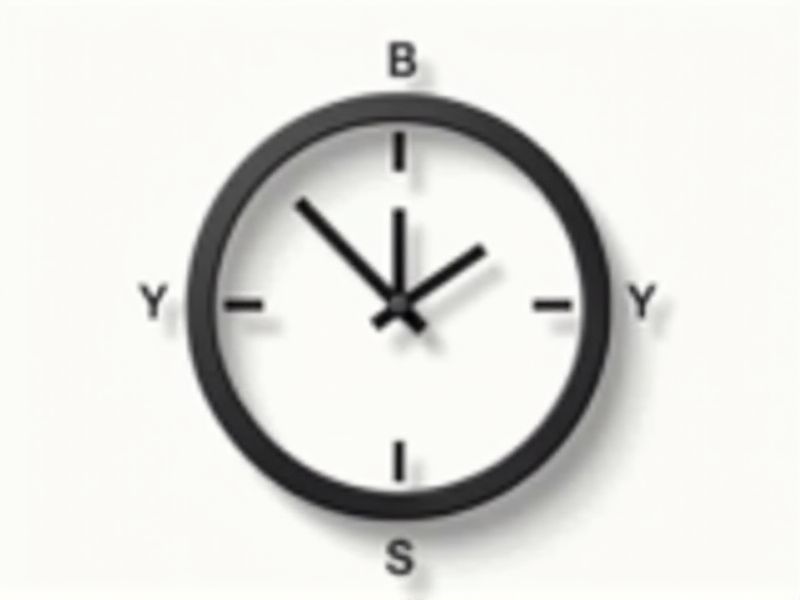
When choosing a wall clock, understanding standard dimensions can help ensure it fits well within your intended space. Most wall clocks typically have diameters ranging from 10 to 14 inches (25 to 35 centimeters), which is ideal for general living areas or offices. For larger spaces, such as conference rooms or spacious living rooms, clocks up to 18 to 24 inches (45 to 60 centimeters) in diameter are commonly used to enhance visibility and style. To choose the right size, consider both the wall area available and how prominent you want the clock to appear in your room's decor.
Diameter Size
The standard diameter size for wall clocks typically ranges from 10 to 14 inches, catering to various room sizes and preferences. A diameter of 12 inches is among the most common choices, providing optimal visibility from a distance of approximately 10-15 feet. For larger spaces, wall clocks of 16 inches or more enhance both functionality and decor. Selecting the right diameter can significantly impact the overall aesthetic and practicality of your living or working environment.
Thickness Measurement
The thickness of a standard wall clock typically ranges from 1 to 3 inches, impacting both aesthetic appeal and functionality. A thinner design, around 1 inch, provides a sleek, modern look suitable for minimalist interiors, while clocks over 2 inches can offer a more traditional, robust presence. It's essential to consider the wall's structure when installing a thicker clock, as it may require more secure mounting methods to ensure stability. When selecting a wall clock, evaluate how thickness aligns with your decor style and practical needs to enhance your space effectively.
Weight Specification
A standard wall clock typically weighs between 1 to 5 pounds, depending on its materials and design. Models constructed from lightweight plastic may fall closer to the 1-pound range, while those made of sturdy metal or glass can weigh up to 5 pounds or more. This weight specification is essential for ensuring the clock hangs securely on your wall without risk of falling. When selecting a wall clock, consider how its weight affects both aesthetic appeal and functional stability in your chosen space.
Frame Material
The frame material of a wall clock significantly influences its durability and aesthetic appeal. Common materials include wood, metal, and plastic, with wooden frames often providing a classic, warm look that complements traditional decor. Conversely, metal frames offer a sleek, modern appearance, typically made from stainless steel or aluminum, ensuring longevity and resistance to wear. For a lightweight and budget-friendly option, plastic frames can be both colorful and versatile, easily fitting into various interior designs.
Face Or Dial Size
The standard wall clock typically features a face size ranging from 10 to 14 inches in diameter, providing optimal visibility in various environments. This size ensures that the clock is easily readable from a distance, making it suitable for both home and office settings. The dial is usually designed with clear markings and contrasting colors, enhancing legibility even in low light conditions. When choosing a wall clock, consider how the size complements your space while meeting functional needs.
Hand Length
The standard hand length for a wall clock typically ranges from 3 to 4 inches for the hour hand and about 4 to 5.5 inches for the minute hand. A longer minute hand enhances visibility, making it easier to read the time from a distance; optimal lengths often depend on the clock's overall diameter, which usually varies between 10 to 24 inches. For precise time-telling, the second hand generally measures around 5 to 6 inches, allowing it to sweep smoothly across the clock face. When choosing a wall clock, you may want to consider these measurements to ensure clarity and aesthetic appeal in your living or working space.
Mounting Or Hanging Mechanism
The mounting or hanging mechanism of a wall clock is crucial for stability and accuracy, affecting its overall performance. Most wall clocks utilize a keyhole slot or hook design, allowing for easy installation and alignment on various surfaces. Ensure your chosen clock supports a weight capacity that suits your wall type, as heavier clocks require more robust mounting solutions. For optimal viewing, place the clock at eye level, roughly 57-60 inches from the ground, providing both functionality and aesthetic appeal to your space.
Glass Or Cover Type
The standard for wall clock covers typically includes two main types: glass and plastic. Glass covers are often preferred for their clarity and scratch resistance, providing a polished look that enhances any room's decor. In contrast, plastic covers are lighter and more shatter-resistant, making them suitable for environments with higher risks of impact, such as schools or gyms. When choosing a wall clock, consider your specific needs regarding durability, aesthetics, and maintenance for the cover type.
Numeral Size
The standard wall clock typically features numerals that range from 1 to 12, each measuring approximately 1 inch in height for optimal readability. In many designs, the hour hand is about two-thirds the length of the clock's radius, ensuring a clear distinction between time intervals. For enhanced visibility, high-contrast color schemes, such as black numerals on a white face, are often utilized. When selecting a wall clock for your space, consider that a diameter of 12 to 16 inches provides the best balance between aesthetic appeal and functional visibility.
Movement Type
The standard of wall clocks predominantly revolves around movement type, which can be classified into three primary categories: quartz, mechanical, and digital. Quartz movements, comprising approximately 90% of wall clocks on the market, utilize a battery-powered oscillator to ensure accuracy, typically within a few seconds per month. Conversely, mechanical movements, though less common, offer intricate craftsmanship with either manual winding or automatic functions, often reflecting traditional horological artistry. Digital clocks, favored for their precise timekeeping, often feature LED or LCD displays and may include additional functionalities like alarms and timers, catering to modern user preferences.
